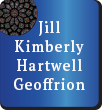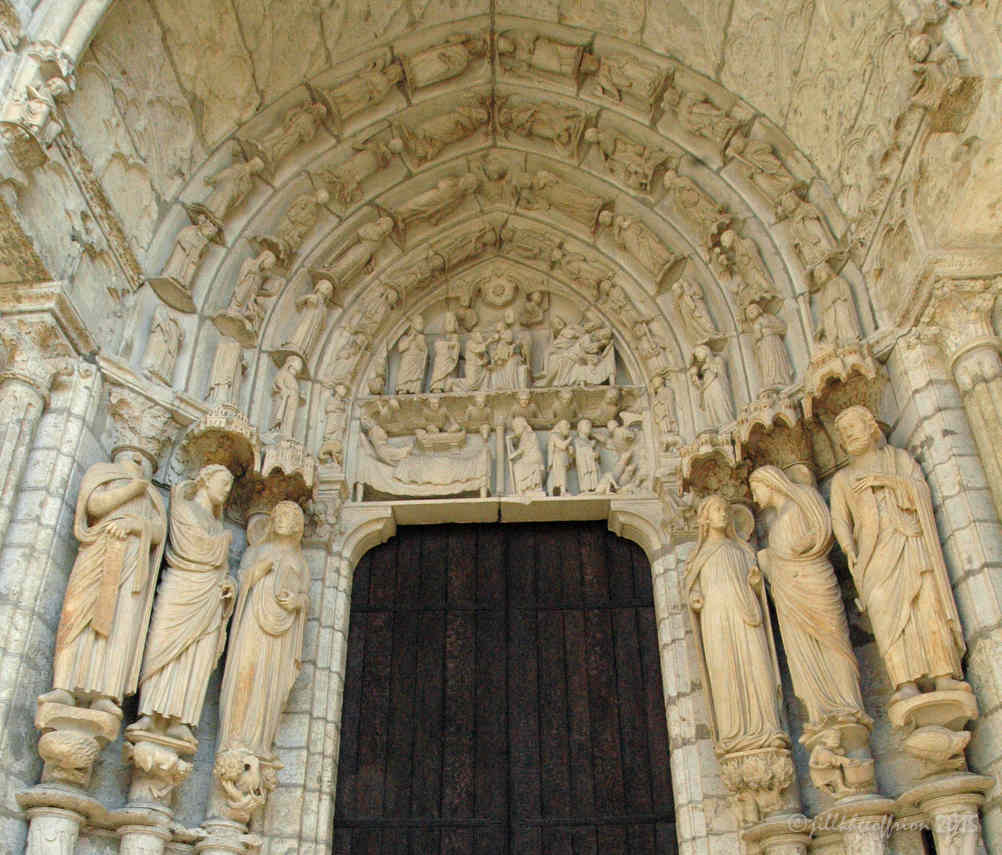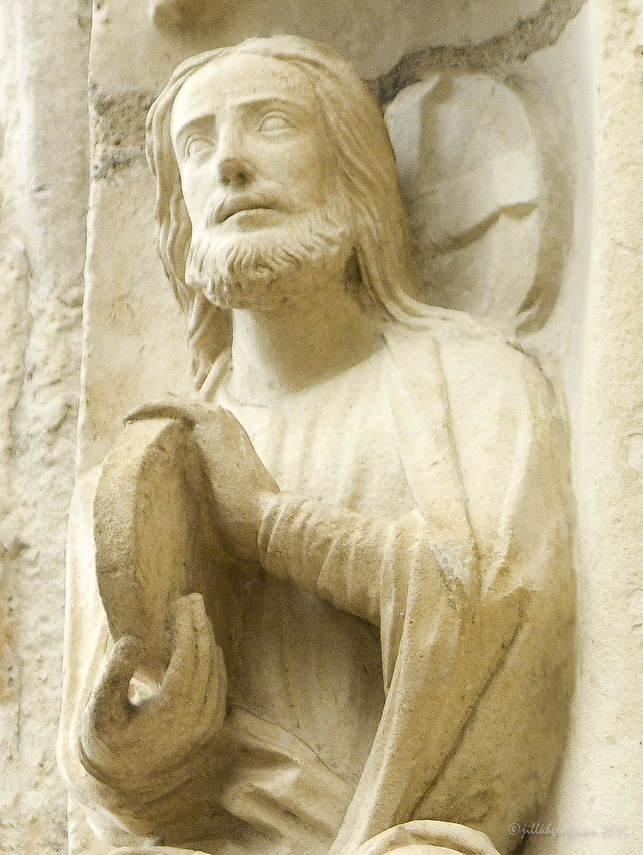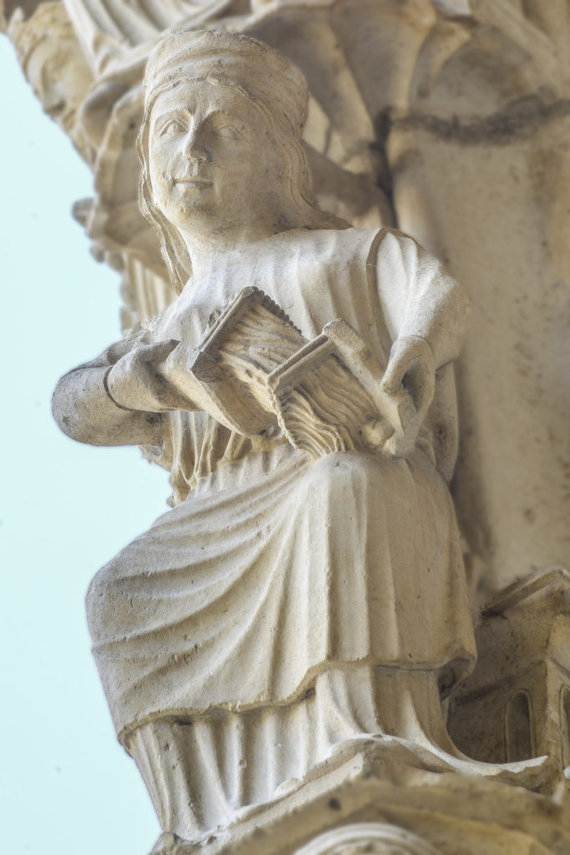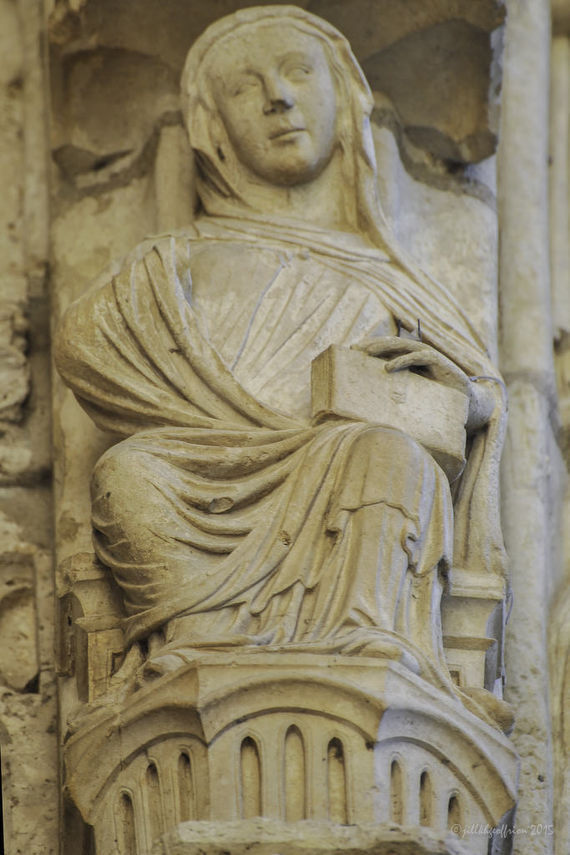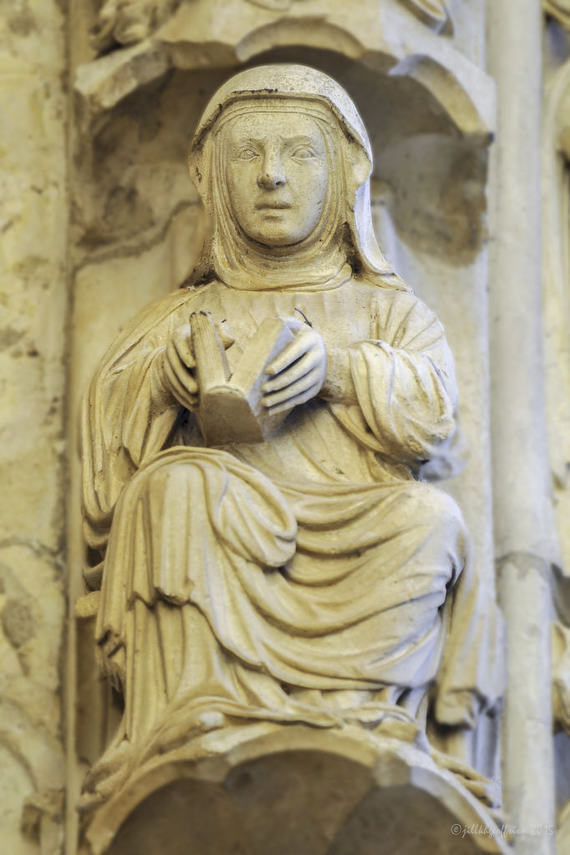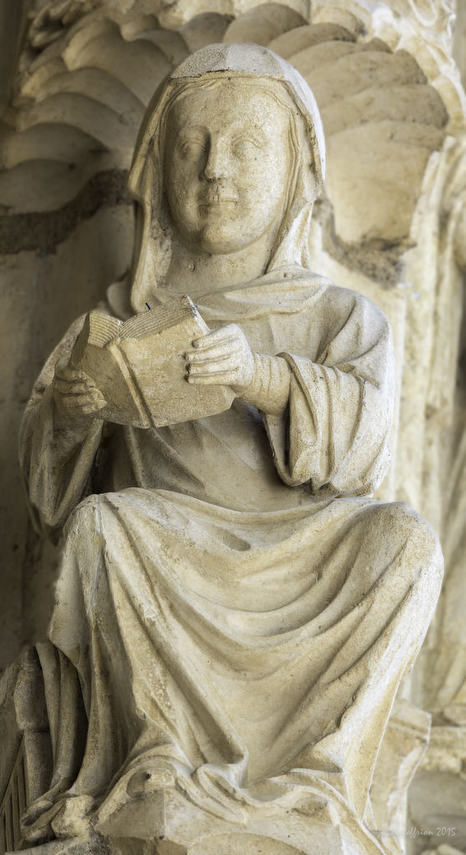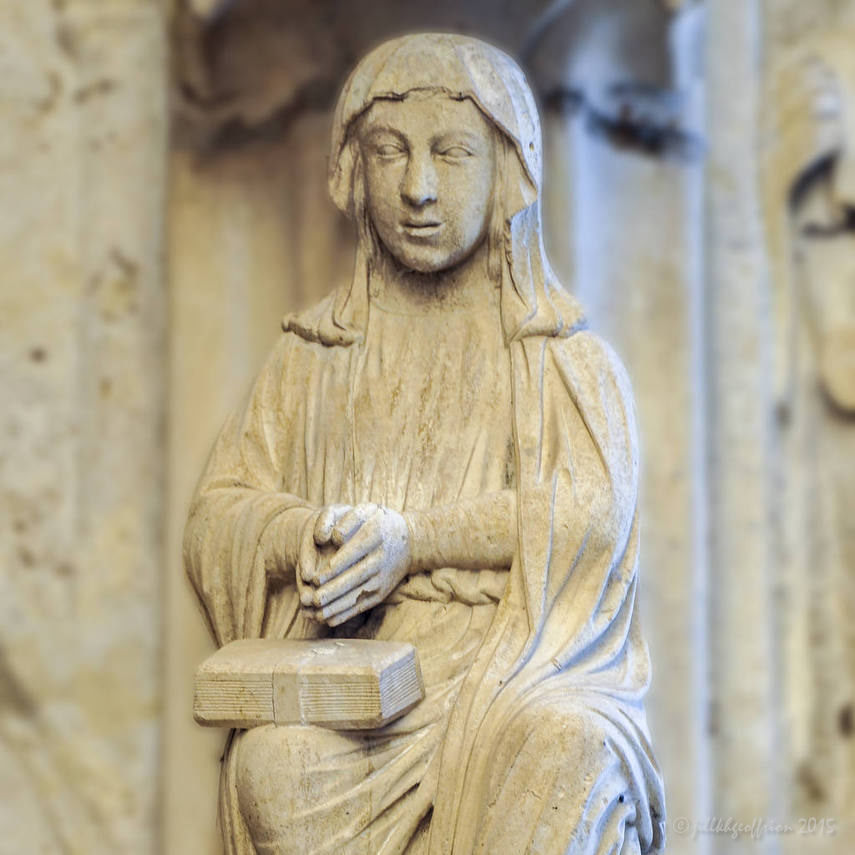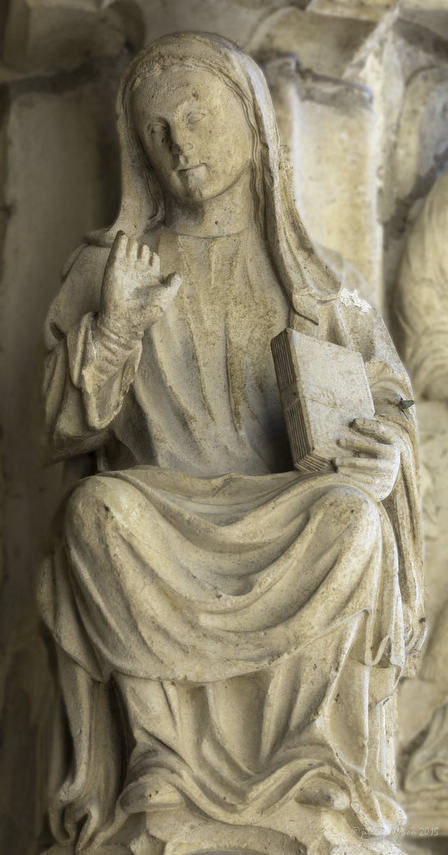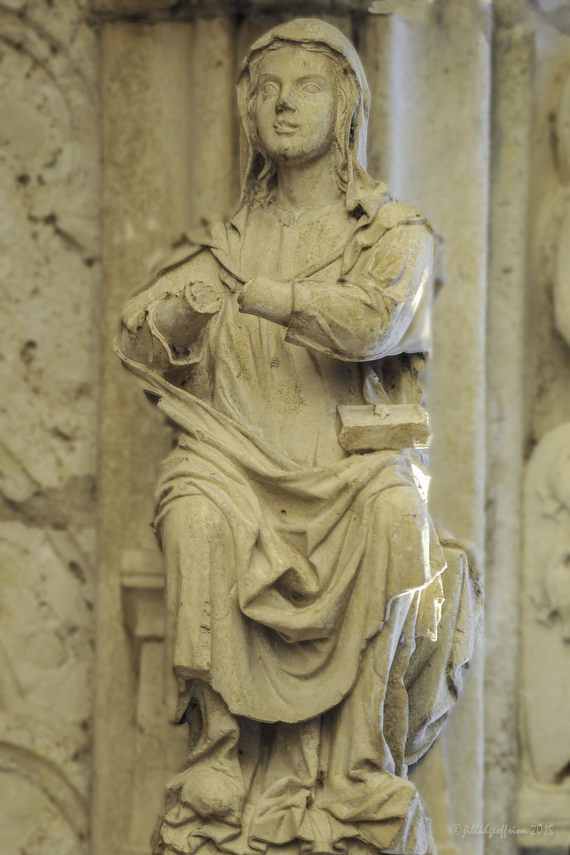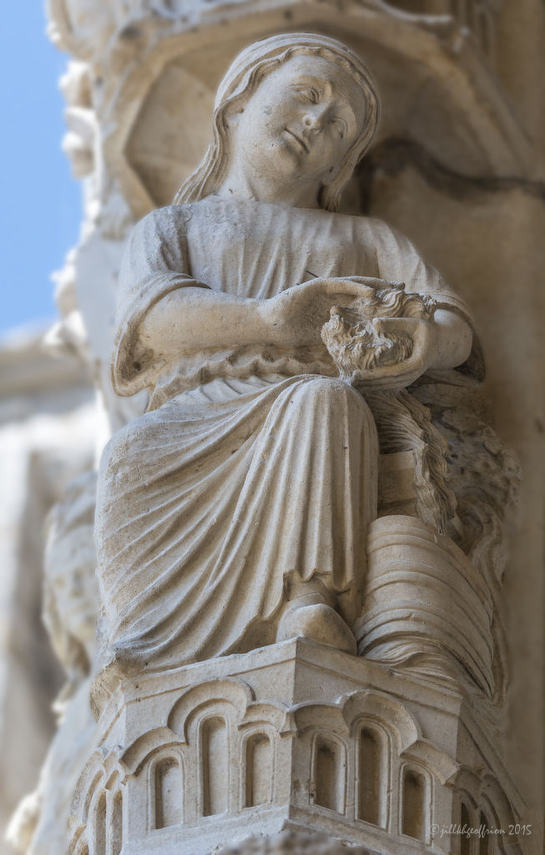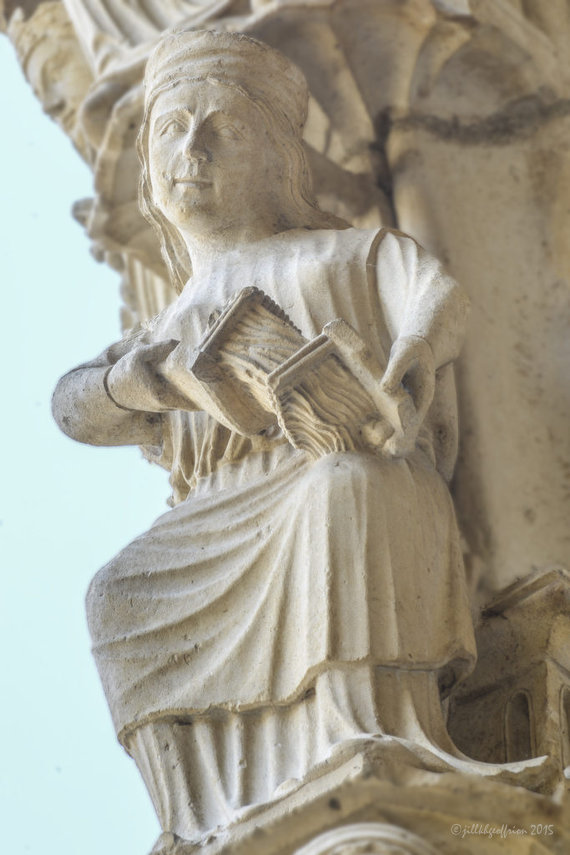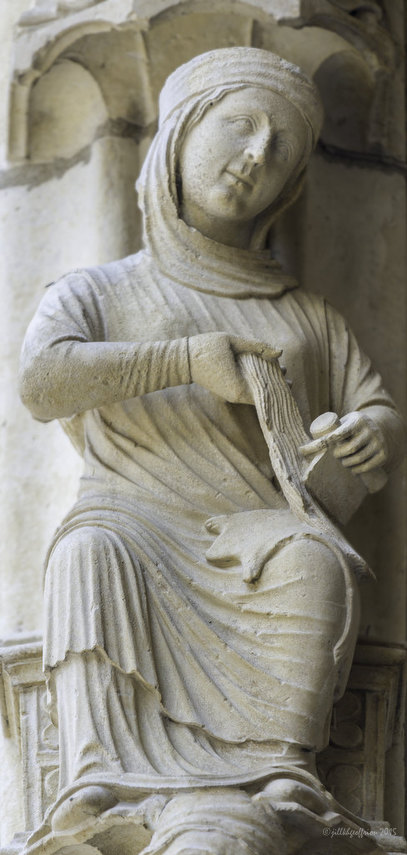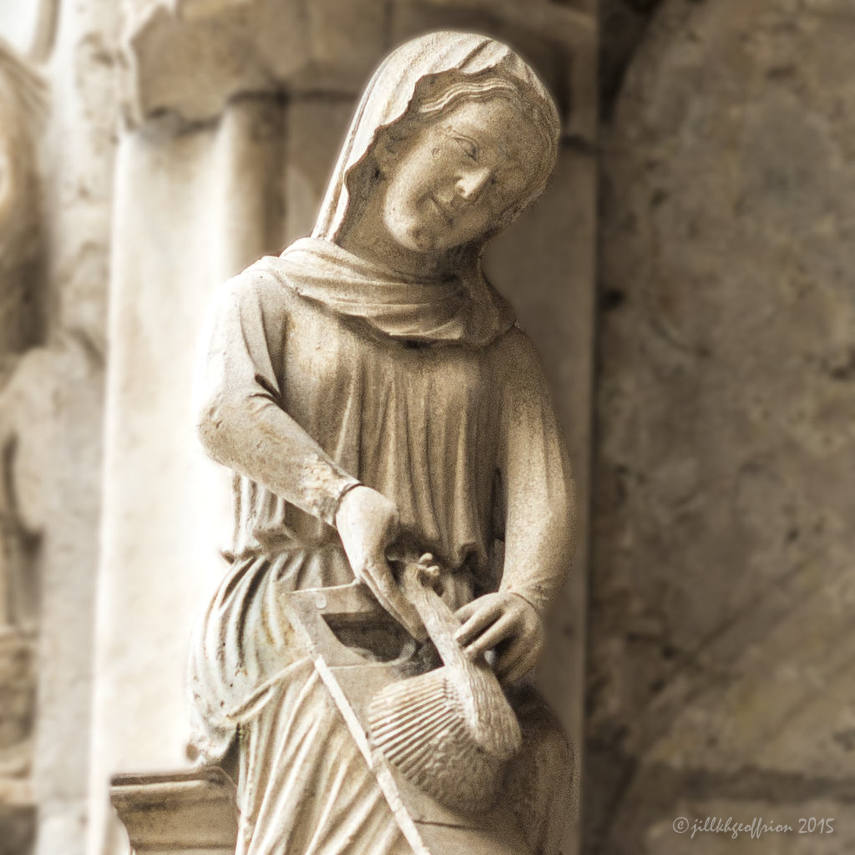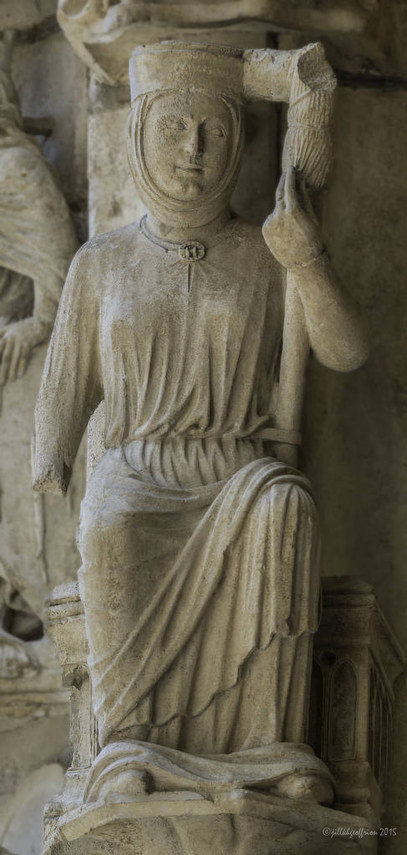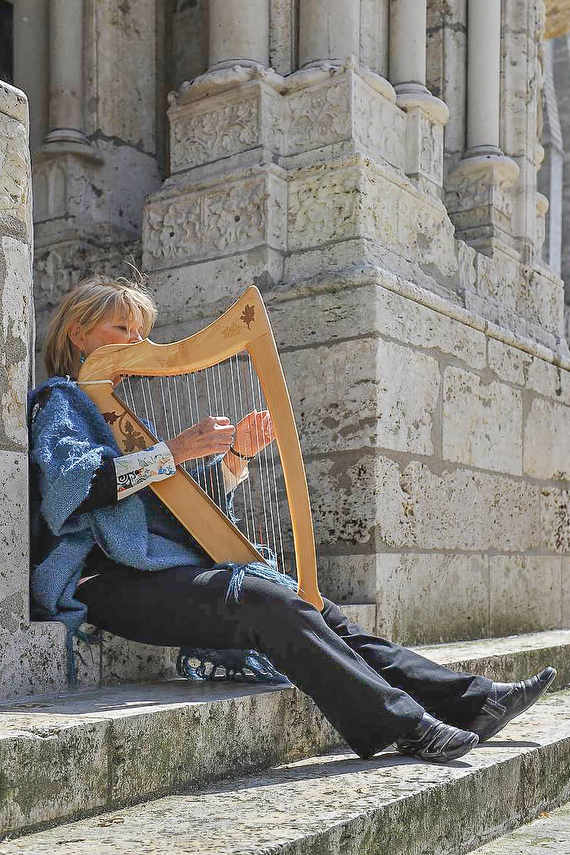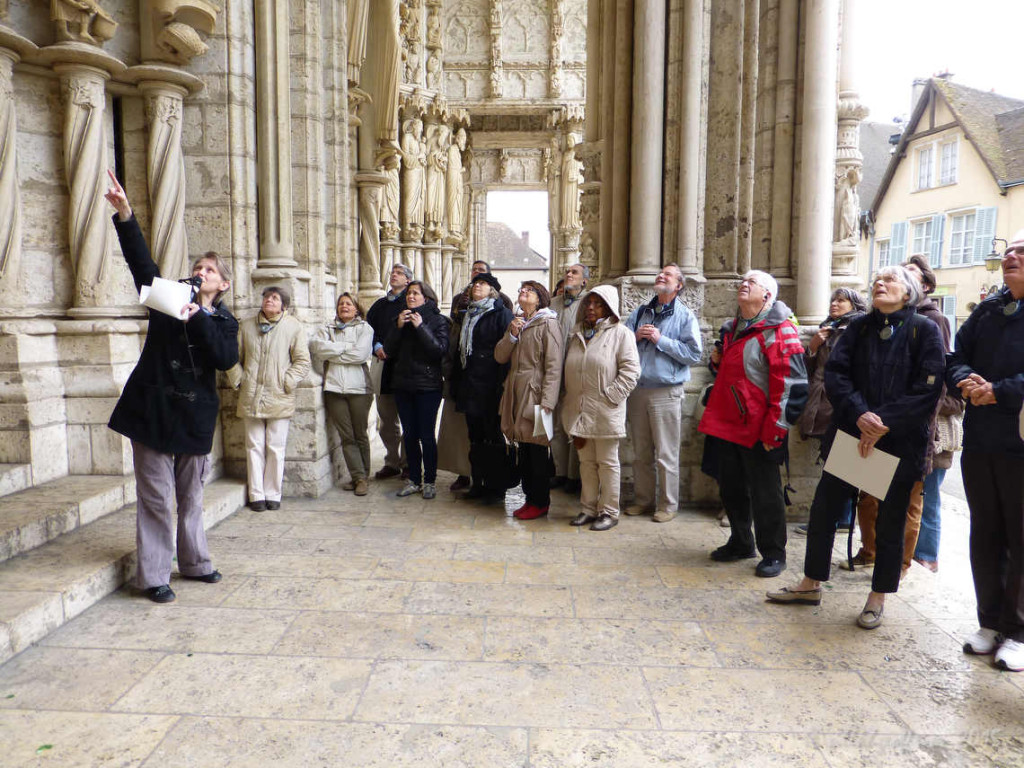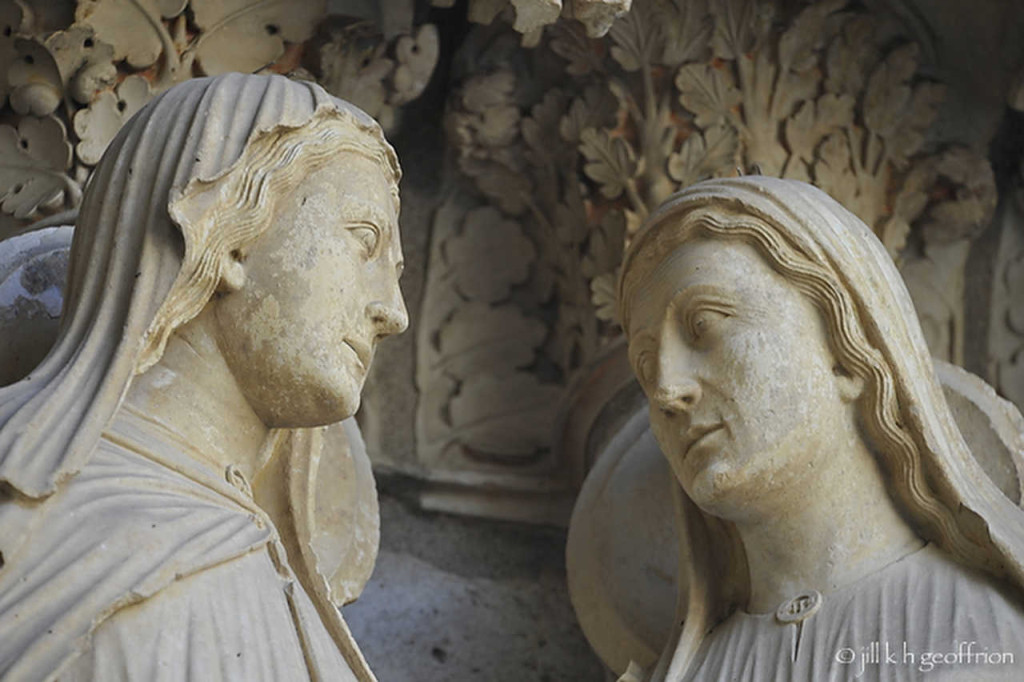Historic Background
“The [north] porch extends the whole width of the transept, about one hundred and twenty feet (37.65 meters), is divided into three bays some twenty feet deep, and is covered with a stone vaulted roof supported on piers. Begun toward 1215 under Philip Augustus, the architectural part was finished toward 1225 under Louis VIII; and after his death in 1226, the decorative work and statuary were carried on under the regency of his widow, Blanche of Castile, and through the reign of her son, Saint Louis (1235-70), until about 1275, when the work was completed by Philip the Hardy. A gift of the royal family of France, all the members of the family seem to have had a share in building it, and several of their statues have been supposed to adorn it. The walls are lined—the porch, in a religious sense, is inhabited—by more than seven hundred figures, great and small, all, in one way or another devoted to the glory of the Queen of Heaven.” Adams, Henry. Mont-Saint-Michele and Chartres. Princeton, NJ: Princeton University Press, 1989. Page 78.
Invitation to Prayer
Praying outside of the cathedral can be very meaningful. In the afternoon, when the sun warms the north side, is a wonderful time to pray with the architecture and images of the north porch.
Begin by simply standing on the porch and being open to praying as you are led. If you need time to settle first, spend time preparing to pray by drawing or photographing. While you do so, ask, “God, what are you showing me?” Then, use the various images described below to lead you into deeper communion.
Praying with biblical stories and images of Mary
You may wish to pray with one of the many images of Mary that are found here. The north side of churches represents the Old Testament and all that came before Christ. Mary is the bridge and as such is well represented as a daughter of the Old Testament (the trumeau statue of Anne holding the infant Mary) and the Mother of the Church (Jesus crowning Mary on the tympanum of the central portal. The East Portal includes statues of the Annunciation (Gabriel and Mary) and the Visitation (Mary and Elizabeth) as well as the Nativity of Jesus and the visit of the Wise Men.
Find a sculpture of Mary that is drawing you. While gazing at it contemplatively, converse with Mary or God about what is on your heart.
Take your Bible to the northeast portal. Read the passage that corresponds to one or more of the groupings of statues. Pray for deeper understanding. Gaze with openness and welcome what comes.
Annunciation: Two column statues to the left of the door. Ponder Luke 1:26-38.
Visitation: Two column statues to the right of the door. Ponder Luke 1:39-56.
Nativity: Mary in bed, Jesus in a manger above her, and Joseph (dreaming) to the right. First level of the tympanum. Ponder Luke 2:1-7.
Visit of the Shepherds: Shepherds and angels. Left side of the first level of the tympanum. Ponder Luke 2:8-15.
Visit of the Wise Men: The visit of the Wise Men with the star that guided them above. Second level of the tympanum. Ponder Matthew 2:1-12.
Praying with images of Creator God.
Praying with Images of the Creation and the Garden of Eden
The outer two rows of small sculptures spanning the central doorway (closest to the street) are many images showing the creation of the world and the struggles of humanity. Choose one or more as the focus of your prayer. The blog entries linked below will give you more background and prayer ideas.
God, the Creator: Hands of the Creator, God Holding the Book of Knowledge; God Creating the Garden of Eden; God Creating the Animals (Day 6 of Creation at Chartres); God Imagining Humanity (Day 5 of Creation at Chartres); Envisioning Creation; Deep Consideration, In the beginning, God created…; The God of Creation; Inspiration
The Creation of Humanity: The Creation of Eve; God Creates Humanity (Day 6 of Creation at Chartres); Adam, Safe and Securely Created (Day 6 of Creation at Chartres); God Loving Adam into Being (Day 6 of Creation at Chartres); Loved
Adam and Eve, Drama in the Garden of Eden: Longing for Home; Guarding; Being Sent Forth; Consequences: The Blame Game; Nowhere to Hide From God’s Searching Love, Alienation Hurts; Adam Chokes: The Feel of Alienation: Eve and the Serpent, The Heart of Naming: Adam in the Garden of Eden; Adam at Home in the Garden of Eden; Animal Connections (Day 6 of Creation at Chartres); The Fall of Humanity
The Creation of the Natural World: Imagining Humanity and Creating the Bird and Fish (Day 5 of Creation at Chartres); The Sun and the Moon (Day 4 of Creation at Chartres); Vegetation (Day 3 of Creation at Chartres); Creation Plants and Trees; The Firmament; Night and Day; Heaven and Earth; Creation: Part 2
The Garden of Eden: Trouble in the Garden; The Rivers of Eden, The Animals, Fish, and Birds of the Garden of Eden; The Animals, Fish, and Birds of the Garden of Eden; The Garden of Eden; The Animals Created by God (Day 6 of Creation at Chartres)
Outside the Garden The Last Word Is Love
Praying with the Contemplative and Active Women on the North East side of the Porch
High up over the outer porch of the East Portal are a series of sculptures that depict women in contemplative (west side) and active (east side) positions. Take time to study them. Ask yourself, “Who do I most identify with?” Let your observations lead you into prayer. Remember that during the middle ages when these sculptures were created, the active life and the contemplative life were both considered holy.
Praying with the active women of the North porch.
Praying with the contemplative women of the North porch.
The Big View: Praying with the Psalms of Ascent
Step off the porch and notice how the steps lead toward the inside. Let the movement inspire you to look within and pray from there.
Some find the steps of the North Porch to be a helpful place to consider the Psalms of Ascent, Psalms 120-134.
Begin reading a selected psalm at street level. Move up one step after each verse. Finish reading the psalm at the top of the stairs. (Thanks to the New England Labyrinth Guild Pilgrimage leaders for this idea.)
Or, read one or more of the psalms and while sitting on the North Porch meditate on it. For example:
Psalms 121 (NRSV) A Song of Ascents.
I lift up my eyes to the hills—
from where will my help come?
My help comes from God,
who made heaven and earth.
God will not let your foot be moved;
God who keeps you will not slumber.
God who keeps Israel
will neither slumber nor sleep.
God is your keeper;
God is your shade at your right hand.
The sun shall not strike you by day,
nor the moon by night.
God will keep you from all evil;
God will keep your life.
God will keep your going out and your coming in
from this time on and forevermore.
Other prayer suggestions for the north porch
Center yourself on this porch. Be HERE. Write a prayer or a prayer poem in your journal. Or, pray in any other way that delights you.
Make a drawing/sketch of this porch, or one or more of its elements. Let your hand express your prayer.
This porch leads us from outside to inside. Following that movement, let your attention be drawn inside to your heart.
Any of the seven hundred sculptures on this porch could inspire your prayer. The Job portal offers much food for thought. There are the vices and virtues, the work of the months, the Old Testament heroes, and so much more. Keep coming back!
Bibliographie:
Prache, Anne. Cathédrales de France: Chartres. Paris: Centre de Monuments Nationaux/Éditions du Patrimoine.
Prache, Anne. (1994). Chartres: Le Portail de la Sagesse. City Needed: Éditions Mame.
Sauvanon, Jeanine. (1999). Femmes du Moyen-Âge: Dames de Chartres. Le Coudray: Chauveau.
Vieubled, J. L. Chartres, La Cathédral: Portail Nord, La Création du Monde (Photos). Chartres, France: Éditions Houvet.
Chartres Cathédrale Porch et Portails Nord. Chartres, France: Patrimoine Restauré En Région Centre.
